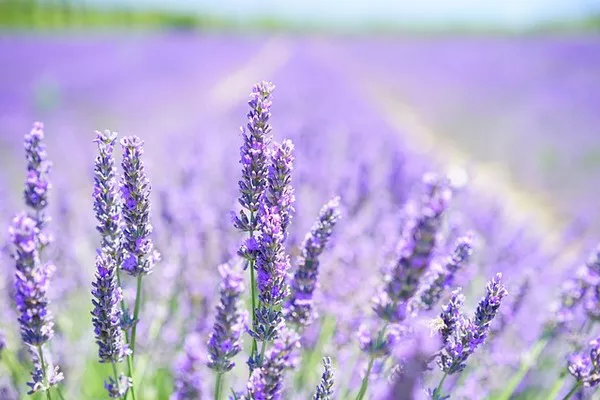Lavender, with its delicate, soothing aroma and enchanting visual appeal, is a beloved herb that has graced gardens, homes, and apothecaries for centuries. Known for its myriad uses, from aromatherapy to culinary applications, lavender’s visual charm is a significant part of its timeless allure. In this article, we delve into the intricate details of what lavender flowers look like, from their botanical structure to the various varieties that exist.
Botanical Characteristics of Lavender
Lavender, scientifically known as Lavandula, belongs to the Lamiaceae family, making it a relative of other aromatic herbs such as mint and rosemary. The lavender plant is characterized by several botanical features that contribute to its distinctive appearance.
Stem and Leaves: Lavender is a woody shrub with slender, gray-green leaves. The leaves are typically narrow, linear, and arranged oppositely along the stems, exhibiting a slightly fuzzy or velvety texture. This unique texture is an integral part of lavender’s charm, contributing to its tactile appeal as well as its visual beauty.
Flowers: The most captivating part of the lavender plant is, of course, its flowers. Lavender blooms appear in tall, slender spikes, often rising above the foliage. These spikes are densely packed with small, tubular flowers that are arranged in whorls, with each whorl containing multiple flowers. The flowers are hermaphroditic, meaning they have both male (stamen) and female (pistil) reproductive parts.
Varieties of Lavender and Their Flower Characteristics
There are many species and cultivars of lavender, each with its own unique characteristics. Here are a few popular varieties and descriptions of their distinct flower appearances:
Lavandula angustifolia (English Lavender):
Flower Color: English Lavender typically has spikes of small, fragrant flowers that range from pale lavender to deep purple-blue. This range of hues is one of its defining features.
Flower Shape: The individual flowers on the spike are tubular with a top-shaped corolla, which gives the spike a distinctive “bottlebrush” appearance.
Lavandula stoechas (French Lavender):
Flower Color: French Lavender is known for its showy, tufted flowers that have a prominent tuft or crown of petal-like bracts at the top. These bracts can be violet, pink, or white.
Flower Shape: The bracts give French Lavender a unique visual appeal, making it easily distinguishable from other lavender varieties.
Lavandula dentata (French Lavender):
Flower Color: French Lavender, also known as fringed lavender, bears spikes of small, lilac to pink flowers.
Flower Shape: What sets this variety apart are its serrated or toothed leaves, which add an extra layer of texture to its visual charm.
Lavandula x intermedia (Lavandin):
Flower Color: Lavandin flowers come in various colors, including shades of blue, purple, and even white.
Flower Shape: Lavandin plants produce elongated spikes with numerous individual flowers that are densely packed, creating a fuller, more robust appearance compared to some other varieties.
Lavandula viridis (Green Lavender):
Flower Color: Green Lavender, as the name suggests, features pale green flowers that make it a unique and intriguing variety.
Flower Shape: The flowers have a similar tubular structure, but the distinctive green color sets them apart.
Lavandula stoechas pedunculata (Spanish Lavender):
Flower Color: Spanish Lavender is characterized by its striking purple or magenta-colored flowers, often with pronounced bracts.
Flower Shape: The tufted, pineapple-shaped heads of the flowers are a defining characteristic of this variety.
The Scent of Lavender
Apart from their visual allure, lavender flowers are renowned for their aromatic qualities. The delightful fragrance of lavender is a key reason for its extensive use in perfumery, aromatherapy, and herbal remedies. The scent is derived from the essential oils contained in the flowers and leaves, which are released when the plant is touched or brushed against.
The lavender aroma varies slightly among different species and cultivars, with English Lavender being prized for its sweet, mellow scent and French Lavender offering a more intense, camphor-like aroma. Lavandin, with its robust flower spikes, often boasts a scent that combines elements of both English and French Lavender.
Cultivating Lavender for Optimal Visual Appeal
To fully appreciate the visual beauty of lavender flowers, it’s essential to understand how to cultivate and care for these plants. Lavender is known for its hardiness and adaptability, but following some key guidelines will help you achieve the best visual results in your garden.
Location: Lavender thrives in full sun and well-drained soil. Placing your lavender plants in a sunny spot with good air circulation will ensure vigorous growth and abundant blooms.
Pruning: Regular pruning is essential for maintaining the shape and appearance of your lavender plants. Prune in the spring to encourage bushier growth and remove spent flower spikes to encourage new ones.
Soil and Drainage: Lavender prefers soil that is slightly alkaline and well-draining. Amending your soil with gravel or sand can help improve drainage, which is crucial for preventing root rot.
Watering: Overwatering is a common mistake when caring for lavender. These plants are drought-tolerant and prefer to dry out between waterings. Water sparingly, especially after the plants are established.
Fertilization: Lavender typically does not require heavy fertilization. A light application of a balanced fertilizer in the spring can be sufficient.
Conclusion
Lavender’s visual charm is as enduring as its aromatic allure. The delicate, tubular flowers, ranging in colors from soft purples to vibrant pinks and even the occasional green, are a testament to nature’s artistry. Lavender’s distinctive botanical features, from its velvety leaves to the slender spikes of blossoms, have captivated gardeners, artists, and enthusiasts for generations.
Whether you choose to cultivate lavender in your garden, use its fragrant blooms in aromatherapy, or simply admire its beauty, there is no denying the enchanting appeal of lavender flowers. Understanding their botanical characteristics, variations, and how to care for them ensures that you can fully appreciate the visual splendor of these timeless and beloved blooms.


